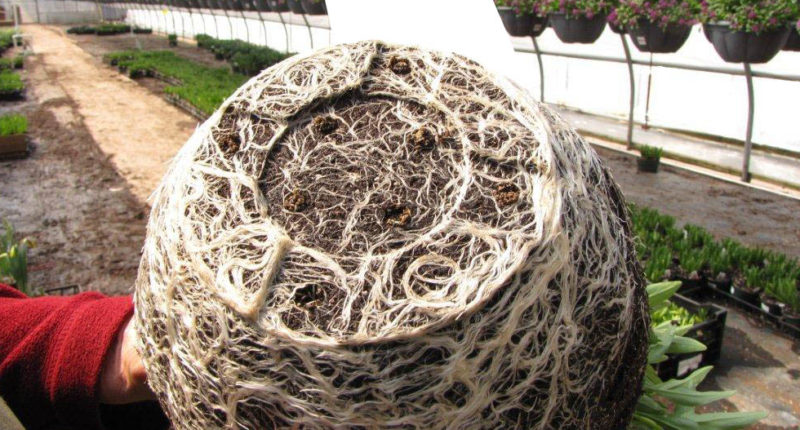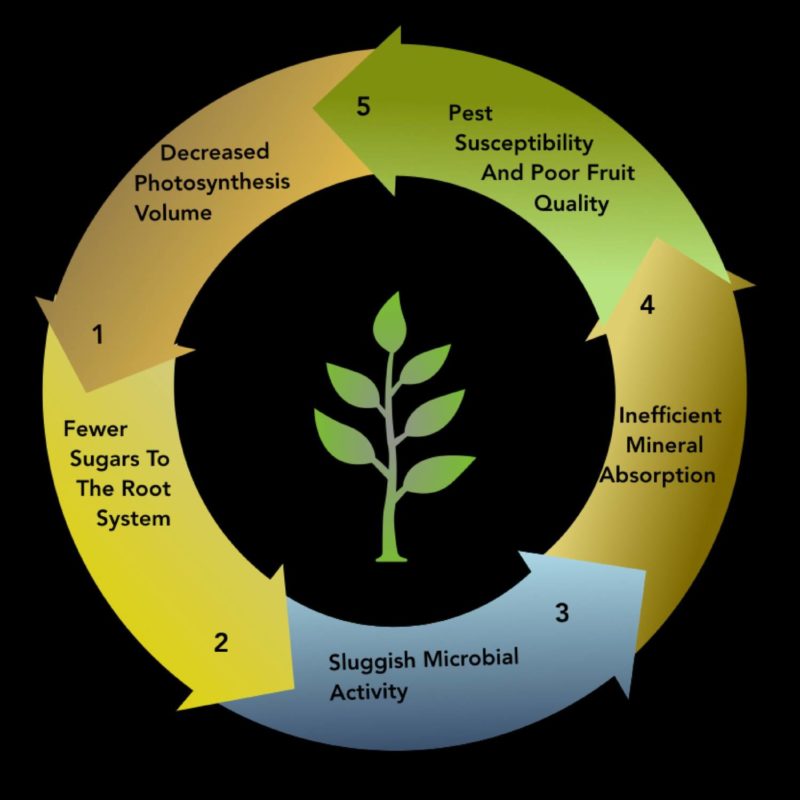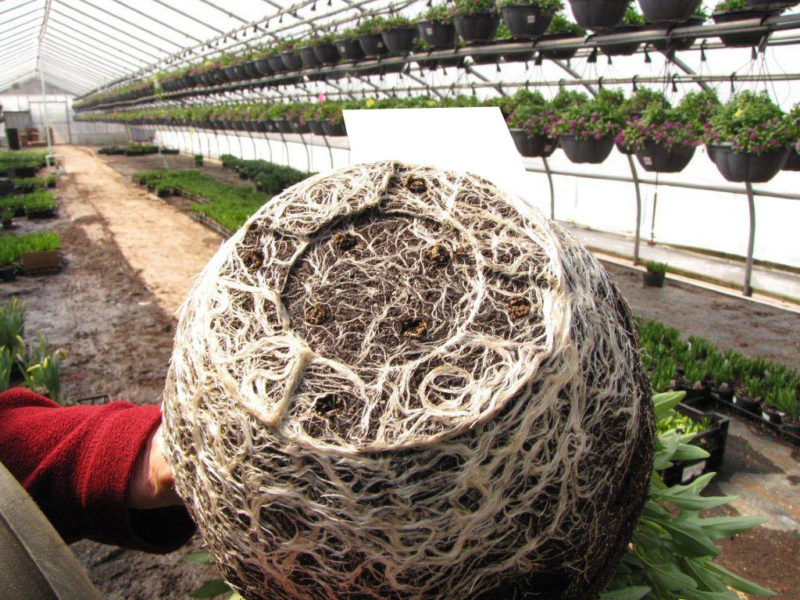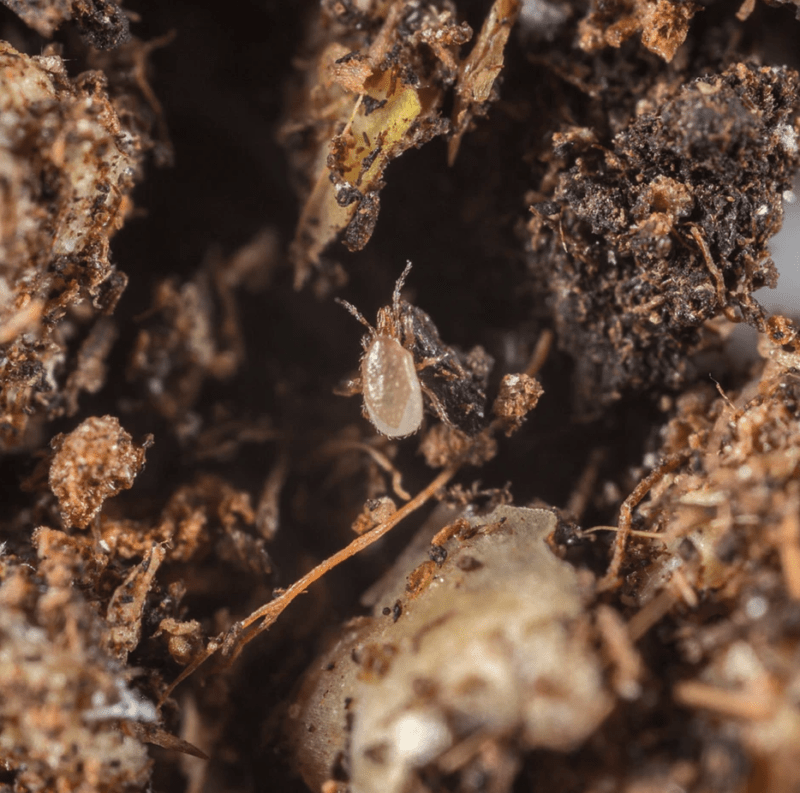
Roots, Shoots & Environmentals
As an experienced greenhouse grower in New Jersey once told me, “Optimizing your greenhouse potential is all about understanding your root zone to your shoot zone and the environmental impacts that affect both of them. Optimizing also means sustainability of not just your processes, but where your resources are coming from.”
Is the goal of optimizing to find the one perfect way to do things or is optimization more of a personal preference? Most growers would say that there are several ways to optimize and there is no single “best way.” They would also
agree that by the time you see the effects of problems in the root zone, you’re already behind the eight ball. That’s what we’re going to focus on in the rest of the article.
SAP ANALYSIS
David Miller is with Advancing Eco Agriculture, a company that specializes in finding problems as soon as they occur. “A lot of what happens below the surface is affected by what’s in the leaf, within the plant. The plant feeds the bacteria and in return, the bacteria and the fungi agree to make nutrients available to the plants. If you have a nutrient deficiency or excess, the plant will photosynthesize less efficiently. The decline cycle continues because you no longer have that symbiosis going on.”
His company uses an interesting technique of sap analysis for nutrients (see Figure 1). As an example, by the time you see visual verification of a problem in tomatoes such as leaves turning yellow, the plant is already cannibalizing itself to try and keep growing. “The heart of what we do is grow food as medicine,” Miller says. “The medicinal compounds are really what bring out all that flavor and aroma of what we know as good food. It’s all based on the mineral balance.”

ROOT COATING
Sap analysis will help determine whether or not you have a problem, but can you prevent problems in the root zone? We posed that question to Michael Brownbridge of BioWorks.
“If your root system isn’t functioning properly, your plant won’t grow as well, it won’t mature as quickly or it will simply die. And, that’s irrespective of the way you’re growing it, peat-based, substrates or hydroponic systems. A healthy root system is fundamental to a healthy plant.”
That gets back to what Theodore Huggins, iUNU’s senior horticulturist, reminded me. “In a root zone, you can optimize your greenhouse by inoculating your plants against fungus and controlling pests before they become a problem. From the root zone, you can maximize your fertilizer inputs.”
Brownbridge explains that his company focuses on putting beneficial microbes into the soil where they coat the root surface and they grow with the roots to prevent root diseases. The microbes improve a plant’s capacity to utilize fertilizer more efficiently (see Figure 2).
“Organisms help roots develop, to colonize growing substrate more effectively, and they do it by promoting root hair development. This helps a plant absorb nutrients more efficiently, solubilize, and move some of the critical elements of the media.”

He was careful to point out that supplements are not a replacement for fertilizer; they’re organisms that help plant roots develop by promoting root hair development. Plants absorb more efficiently, thus their overall nutrition plan functions more efficiently.
PEST CONTROL
We’ve discussed sap testing and we’ve discussed root coating. What happens if the problem is that your plants are the victims of a pest infestation? For produce growers, the dilemma is even greater because of the limits on pesticides even if you use biological insecticides. Artificial Intelligence systems can provide early pest detection and pathogens in the canopy, and many growers still use old-fashioned yellow sticky cards. Below the surface is different — whether it’s soil, substrates, or hydroponics — your eyes can’t see problems very well.
Robert Starnes is with Shale Peak Horticulture, and his company uses IPM techniques to mitigate insects in the soil (see Figure 3).
“For example, we use predator mites that go after the fungus gnat larvae before they hit the adult stage. The idea is if you can get them before they become adults you can stop the problem. Nematodes work the same way as well. The goal is to catch the larvae, including shore fly larvae below the ground, and destroy them in the soil. ”

These tools are designed to help you optimize your greenhouse by inoculating your plants against fungus and by controlling pests before they become a problem. The root zone is where you maximize your fertilizer inputs. As one grower told me, “The goal is to optimize the conditions that allow the crop you’re growing to reach its full potential.”
Most importantly, if you are employing good agricultural practices your food can be safely distributed to the general public. In a sense, maintaining a GAP certification is the ultimate form of optimization.


 Video Library
Video Library 




















